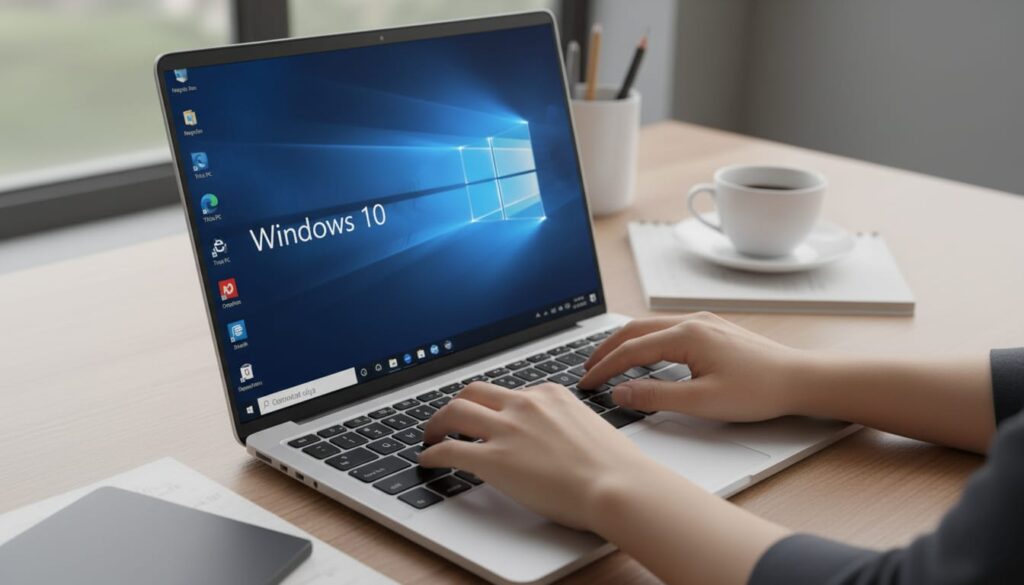In one of the most significant software retirements in years, Microsoft officially ends support for its Windows 10 operating system today (Tuesday, October 14, 2025). The move affects hundreds of millions of users worldwide, marking the end of a decade-long era for one of the most popular computer systems ever made.
After this date, Microsoft will no longer provide free security updates, patches, or technical support, leaving computers running Windows 10 increasingly vulnerable to cyber threats.
Why It Matters
- Windows 10 runs on more than 1.4 billion devices globally, according to Microsoft.
- As of July 2025, 43% of Windows machines still used Windows 10 (Statcounter).
- In the UK alone, over 21 million people still rely on the system, per consumer group Which?.
- About one in four users plan to keep using Windows 10 despite risks.
This widespread dependency means today’s deadline will impact households, businesses, schools, and public institutions alike.
What Ends Today
- From October 14, 2025, Microsoft stops providing:
- Security and quality updates
- Bug fixes and performance patches
- Free customer or technical support
- Feature updates or improvements
While devices will continue to operate, they will no longer be protected from new security vulnerabilities, potentially opening doors to malware, ransomware, and data breaches.
Microsoft’s Options: Upgrade or Pay
Microsoft is urging users to upgrade to Windows 11, which remains a free upgrade for compatible PCs.
However, many older machines do not meet Windows 11’s hardware requirements — particularly the need for a TPM 2.0 chip and Secure Boot compatibility.
For those unable to upgrade, Microsoft is offering Extended Security Updates (ESU):
- Free for one year for users in the European Economic Area (EEA) who register.
- $30 per year (approx. ₹2,500 or £22) for other consumers.
- $61 per device annually for business customers.
The ESU program runs until October 2026 for consumers – but only provides critical security patches, not new features or improvements.
The Growing Concerns
Experts and consumer groups have raised several red flags:
- Cybersecurity risk: Unsupported systems could become prime targets for hackers.
- Financial burden: Older devices that can’t upgrade may force users to buy new PCs.
- Environmental impact: Millions of still-working computers could become e-waste.
For Businesses and Institutions
Enterprises and educational institutions can purchase multi-year ESU coverage:
- Year 1: $61 per device
- Year 2: $122
- Year 3: $244
Microsoft says it will double the price each year, encouraging organisations to migrate quickly to Windows 11 or cloud-based systems like Windows 365.
Alternatives for Users
Users now have a few clear paths forward:
- Upgrade to Windows 11 (if hardware allows)
- Use ESU for one more year (for temporary protection)
- Switch to Linux or ChromeOS Flex for continued updates on older machines
- Purchase new or refurbished Windows 11 devices
Tech experts recommend backing up data and migrating within months rather than waiting until the ESU deadline.
What Happens If You Stay on Windows 10?
If users continue on Windows 10 without ESU or upgrades:
- They’ll receive no further updates after today’s Patch Tuesday.
- New software and browser versions may stop supporting Windows 10.
- Security vulnerabilities will remain open indefinitely.
Essentially, computers will still run, but each passing month increases the risk of infection or compromise.
Windows 10’s retirement mirrors the 2020 end of Windows 7, which led to widespread cyberattacks on outdated systems. Analysts expect a similar pattern unless users act swiftly.
The transition also highlights a broader tech trend – planned obsolescence vs. sustainability, and whether large tech firms are doing enough to help users upgrade responsibly.
The Windows 10 end-of-support marks a pivotal moment in tech history. Whether users choose to upgrade, extend, or switch, the clock has now run out – and the world’s PCs will never look quite the same again.

